Taking pictures while traveling is a popular way for travelers now. Because of the vast land and abundant natural resources, China has become a destination for many tourists and photographers. This 15-day China tour combined Beijing photography tour with Xi’an, Guilin and Shanghai. You will appreciate the beauty of China's natural scenery on the Li River or at the terraced fields; you will also immerse yourself in the local history and culture on the Great Wall or in the Terracotta Warriors and Horses Museum. And the Yangtze River Cruise tour is also included. Down the Yangtze River, you will be amazed by the diverse scenery along the river. Check the following China photo tour to know more details.

After arrival, your guide will meet you at the airport and then you will be transferred to your hotel. Have a good rest.
Free Time Suggestion: If you want to walk around in the city after arrival, I will suggest you visit Qianmen Street. Qianmen Street is located on the south side of the center of Beijing. It has been the most famous commercial street in Beijing since ancient times. Nowadays, there are also many time-honored restaurants where you can taste authentic roast duck, Beijing hot pot, Beijing dim sum, and other delicacies. You can also join the local people and experience the bustle and chatter of a local tea house on this street. In addition, there are many ancient buildings with archways and red lanterns on the street. They can be the great background of your photos.
In the morning, we will visit Tian’anmen Square and the Forbidden City. Tian’anmen Square is located on the central axis of Beijing. Tian’anmen Gate Tower, the Great Hall of the People, the National Museum, and the Monument to the People's Heroes are all located here. Various large-scale celebrations are also held here. The flag-raising ceremony every morning attracts countless tourists. The national flag is a symbol of a country. The Chinese national flag has been hanging in Tian’anmen Square for 70 years. The National Flag Guard consists of 36 members, responsible for raising and lowering the national flag every day. On the 1st day of each month and on major festivals, a military band composed of 62 soldiers will perform the national anthem live. According to the requirements, when the national flag is raising, people standing around should pay attention to the national flag to show respect for it.
The Forbidden City (closed each Monday) was the home to 24 emperors in ancient China. The palace buildings are all wooden structures. You will see yellow glazed tile roofs, blue and white stone bases, and pillars decorated with resplendent colorful paintings. The palace is surrounded by a 12-meter high and 3400-meter long palace wall in the form of a rectangular city. A 52-meter-wide moat surrounds the wall, forming a fortified castle. You may want to know how many rooms there are in such a huge palace. People said that there are 9,999 rooms in the Forbidden City. Because ancient Chinese people believe there are 10,000 rooms in the palace in heaven. Ancient emperors have great respect for heaven, so they think their rooms should be lesser than the god’s rooms in heaven. That is how the number 9,999 comes. But in fact, according to the statistics, there are a total of 8,703 rooms in the Forbidden City. Your professional tour guide will give you some photographic advice here which can help you create the masterpiece.
And then we will visit the Temple of Heaven. It is the place where ancient emperors prayed for a good harvest. The Hall of Abstinence and the Office of Divine Music are two distinctive buildings in the Temple of Heaven. The Hall of Abstinence is a small palace dedicated to the emperor's residence during fasting before the sacrifice ceremony. The Office of Divine Music is the office responsible for the performance of ritual music during sacrifices.
Option: Peking Roast Duck is the most famous food in Beijing. So, joining in a Peking Roast Duck banquet in its birthplace can be an unmissable experience. There are many famous restaurants for Peking duck in Beijing such as Quanjude Peking Duck Restaurant, Dadong Peking Duck Restaurant, and Duck de Chine Restaurant. If you want to enjoy the Peking duck as your dinner, please tell us in advance. So that we can book the restaurant for you.
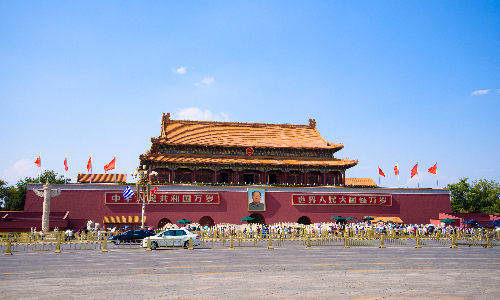
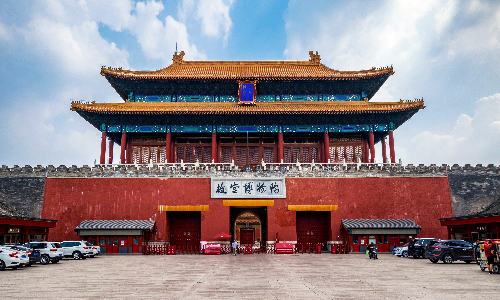
Today we will drive about 1.5 hours (82 KM) to visit the Great Wall. It is to the northeast of Beijing city center. The Great Wall is a favorite place for photographers because of its magnificence and majesty. Several sections of the Great Wall are open to the public. Today, we will take you to visit the Mutianyu section of the Great Wall which is with less crowd. Different from other sections of the Great Wall with crenels on one side, there are crenels on both sides on the Mutianyu Great Wall. A crenel is a shelter for soldiers in warfare. Having crenels on both sides means that soldiers can fight on both sides at the same time. This also reflects the very important strategic position of the Mutianyu Great Wall.
After lunch, we will drive back downtown. And then you will visit the Hutong. Different from the modern buildings in the city center, Hutong is a symbol of traditional Beijing culture. Although Hutong is only composed of simple and plain gray walls and tiles, it is like a museum of folk customs. Let’s hop on a rickshaw and get close into Hutong. You will visit a local family here and have a conversation with the host. He will tell you some stories about what happed in this small alley.
Option: Cooking Class. If you want to have a deep touch with Chinese culture, we can arrange the Cooking Class for you. You will learn how to make dumplings or other Chinese dishes. We will prepare all the ingredients, cooker and even the apron for you. The most important is that you will get guidance from a professional Chinese chef. And then, the cooked food will be your dinner. Don’t forget to learn how to use Chinese chopsticks. That would be an interesting experience.
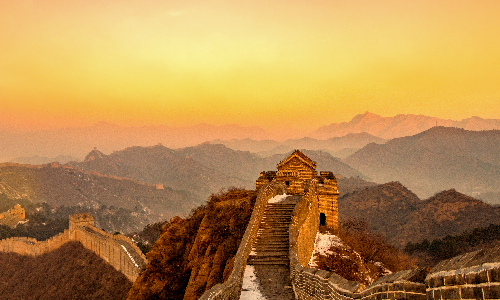
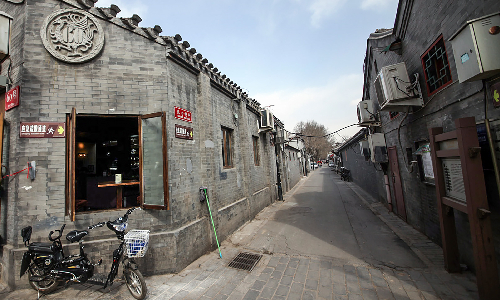
 Xi’an
Xi’an After breakfast, we will take you to visit the Beijing Zoo. The Panda House is the most popular part of the Beijing Zoo. You will see several cute pandas here. As we know panda is the national treasure of China and bamboo is their favorite food. They are chubby and cute. They will spend half of their lifetime sleeping. So, if they are playing on the tree when you see them, do remember to record this moment with your camera. There is a souvenir store here. If you want to buy some souvenirs for your friend, it will be a good place. There are kinds of panda dolls, panda-shaped refrigerator magnets, T-shirts with panda figures, and so on.
After lunch, we will take you to the train station. And you will take an estimated train G87 14:00/18:19 to Xi’an. Our guide will meet you at the train station and then you will be transferred to your hotel.
Free Time Suggestion: Xi'an was the capital of the Tang Dynasty (618-907). The Tang Dynasty was the most prosperous period in ancient China. At that time, many foreign envoys would come to Chang'an, which is now Xi'an, to meet the emperor. Tang Dynasty All Day Mall is a pedestrian street with the theme of Tang Dynasty culture. It is 2,100 meters long, 500 meters wide, and has a construction area of approximately 650,000 square meters. It is the first place to experience Tang culture in Xi'an. The night view here is the most beautiful. When the buildings on both sides are lit up, you will feel like you are back in the Tang Dynasty, especially when you meet young people wearing Tang Dynasty costumes on the road. Here you will also see various performances. The actors were dressed in costumes as if they were characters from ancient paintings. Don’t miss out on this internet-famous site.
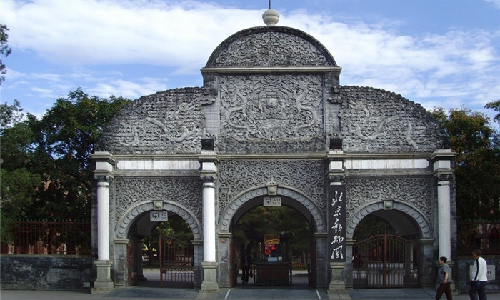
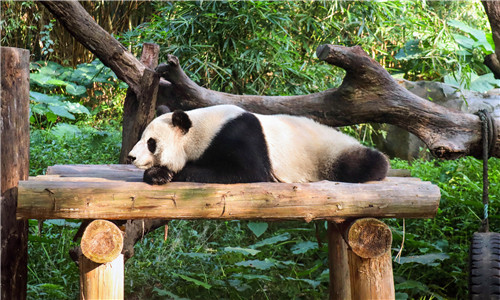
Welcome to the historical city, Xi’an. In the morning, we will first visit the Terracotta Warriors and Horses Museum. More than 8,000 terracotta warriors were unearthed until now. There are differences in their shapes, figures, expressions, eyebrows, eyes, and ages. Before coming to China, you may have seen photos of terracotta warriors and horses. Most of them are the color of clay. But many people may not know that the original terracotta warriors and horses were all colored. According to the experts’ description, the battle robes of the terracotta warriors were painted in red, green, and purple. The pants are mostly blue. The armors are mostly dark brown. Their faces, hands, and feet are all pink. The painted faces of the warriors are particularly wonderful, with white corners of the eyes, black eyeballs, and even the pupils of the eyes vividly painted. The hair bun, beard, and eyebrows of the pottery figurines are all black. The overall color is gorgeous and harmonious. Not only the pottery figurines, but the newly unearthed warhorses are also colorful. The body part of the horse is maroon, the hooves and teeth are painted white, and the mane and tail are black. In short, the original colors of the terracotta warriors and horses are both gorgeous and lifelike. However, after these terracotta armies were unearthed, they were exposed to air, causing them to fade quickly. So, the terracotta warriors we see now are the color of the clay.
And then we will take you to visit the Big Wild Goose Pagoda. It is the earliest and largest quadrangular brick pagoda in the Tang Dynasty. Many precious Buddhist scriptures are stored here. It is said that the designer of the pagoda planned to build a wooden pagoda at first. But considering that the wooden pagoda is easy to be damaged by fire, he changed his mind to build a more solid brick pagoda. And the square beside the Big Wild Goose Pagoda is the largest Tang Dynasty cultural theme square in the world. If you are lucky, you can watch the fountain performance with music here.
After that, you will visit Muslim Street. Muslim Street is a famous snack street in Xi'an. It is called Muslim Street because it is the gathering place of Muslims in Xi'an. There are a large number of gourmet shops on both sides of the street, and nearly 300 kinds of special flavor snacks are can be chosen. The sesame biscuits here are my recommended food. This shop was originally a shop selling sesame oil and sesame paste. And the sesame biscuits here are very authentic. The sesame seeds are sprinkled on the biscuits, which makes the biscuits very tasty.

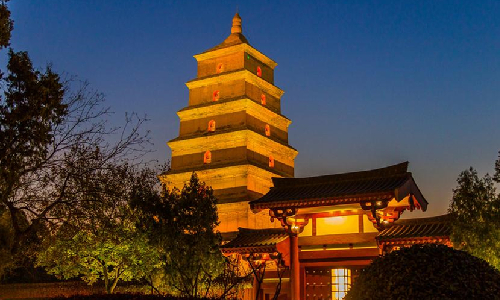
 Guilin
Guilin After breakfast, we will take you to the train station and then you will take an estimated train G2855 8:09/18:26 to Guilin. The train will take you from the north of China to the south of China. You can enjoy the beautiful scenery along the way. Your guide will wait for you at the train station and then you will be transferred to your hotel.
Guilin is an important tourist city in China. Tourists commented that traveling in Guilin seems like walking in a painting. The peak tourist season in Guilin is from April to August each year. April is the beginning of spring in Guilin, so you need to prepare a jacket to keep out the wind and keep you warm. Guilin's rainy and humid season is from May to June. The daily maximum temperature is around 32 degrees. It is best to wear cool clothes and take umbrellas. In July and August in midsummer, you should pay attention to sun protection. There are many mountains in Guilin. It is best to wear flat shoes and bring anti-mosquito potions. Prepare everything and set off the Guilin tour with us.
 Yangshuo
Yangshuo Guilin
Guilin After breakfast, you will take the Li River Cruise to Yangshuo. Guilin is famous for its mountains and rivers. Li River is the most famous one. The Li River is suitable for sightseeing all year round, and April to October is the best time to travel. The river is sparkling on a sunny day. And there is mist on the river on rainy days, which makes the Li River like a fairyland. The cruise will pass by a shoal named Turtle Shoal. From its name, you can see that this shoal is like a big turtle swimming upstream. Besides, you will also see a peak that looks like a blooming lotus. Its name is Lotus Peak. It seems that nature makes all mountains here alive. It may take you about 4 hours to Yangshuo. Today you will have lunch on the cruise.
And in the afternoon, you will disembark in Yangshuo. We will take you to visit Yangshuo West Street. It is 1,400 years old now and is the oldest street in Yangshuo. Here, you can experience local folk culture, buy special souvenirs, and visit well-preserved ancient stone monuments, ancient temples, city walls, and so on. On both sides of the street are brick houses left over from the Qing Dynasty, with white walls and red windows, reflecting the simplicity and elegance of traditional Chinese architecture. And then we will drive back to Guilin.
More information about Guilin: The third day of March in the Chinese lunar calendar is a grand festival in Guilin. Local people in Guilin will do ancestor worship on this day. People in Guilin, especially the Zhuang nationality people in Guilin are very good at singing. So, besides the ancestor worship, they will also hold the folk song singing activity. They will be divided into several teams and sing folk songs in an antiphonal style. Most of the lyrics are created on-site. If either team fails to catch up on the singing on time, this team loses. According to traditional customs, the team that wins the game will get a cow as a reward.
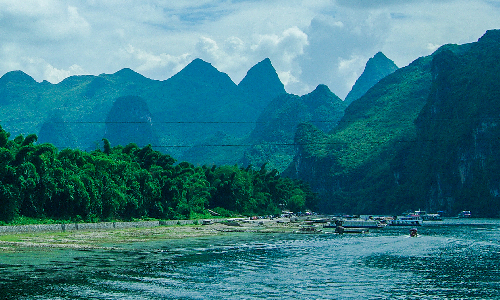
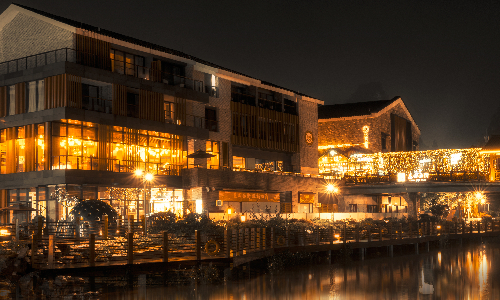
 Longsheng
Longsheng Guilin
Guilin After breakfast, we will drive about 1.5 hours (79 KM) to Longsheng which is to the north of Guilin city. Today we will visit the Longji Rice Terrace. The scale of Longji terraces is very large. From the high mountain peaks to the flat land on the roadside, most of the land has been developed into terraces. From a distance, the terraced fields are like an open fan and cover the mountains. The Longji Terraces is a destination for photographers. Regardless of spring, summer, autumn, and winter, terraced fields always give people beautiful scenery. The terraced fields in spring are filled with water and look like a mirror from a distance. The terraces in summer are like a long green dragon. The terraces in autumn are golden yellow. The terraces in winter are covered with snow, like a fairy tale world.
After that, you will visit the Zhuang nationality village here-Ping’an Village. Here you will see characteristic buildings and costumes of ethnic minorities. If you come here in the spring, you may also participate in the Plowing Festival here. The Plowing Festival is a festival held by local farmers before they start farming terraces. Farmers will use various activities to pray for a good harvest. They will hold a competition to climb the terraces. The first person to reach the top of the terraces will be rewarded.
After that, we will drive back to Guilin.
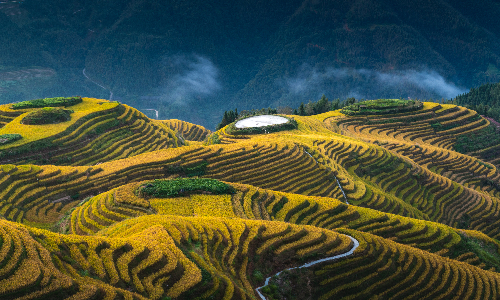
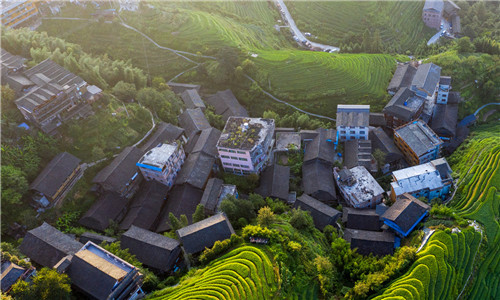
 Chongqing
Chongqing After breakfast, we will take you to the train station and you will take an estimated train G2856 11:28/16:10 to Chongqing. Your guide will meet you at the train station and then you will be transferred to the pier. You will go on board and start your Yangtze River cruise tour here.
The Yangtze River is the longest in Asia. It flows through many cities in China including tourist cities such as Chongqing, Yichang, and Shanghai.
Today you will visit the first sightseeing area along the Yangtze River, Fengdu Ghost City. It is a very distinctive and historical town in China. There are various buildings that are regarded as the buildings in the nether world where the soul goes after people dead in Chinese legend. For example, you will see a bridge which is named Abyss Bridge. It is said that this is a bridge that connects the real world and the nether world. So, every soul needs to walk across this bridge to arrive in the nether world. If the dead man is a kind person when he was alive, he can reach the nether world successfully. Otherwise, the soul of the bad guy will be pushed into the abyss below. Although it is only a legend, it shows us the concept of "punishing evil and promoting good" in China. And that is also a way to remind people to be kind.
And then we will visit the Shibao Pagoda. It is built on the mountain with a peculiar shape, and is known as the Pearl on the Yangtze River. The original pagoda is with 9 stories. Because in ancient Chinese people’s minds, nine is the largest number. And the building in heaven is with 9 stories. In 1956, this pagoda was restored and another 3 stories were added. So nowadays, you will see a 12-story pagoda. The top floor of the pagoda is an excellent location to take pictures of the Yangtze River. Entering the main hall of the pagoda, you will see a large mural that tells the story of Goddess mending the sky. Legend has it that one day in ancient times, there was a hole in the sky. The goddess named Nvwa used five-colored stones to mend the sky. This is the earliest legend in China.
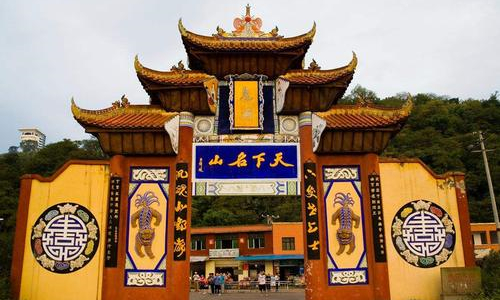
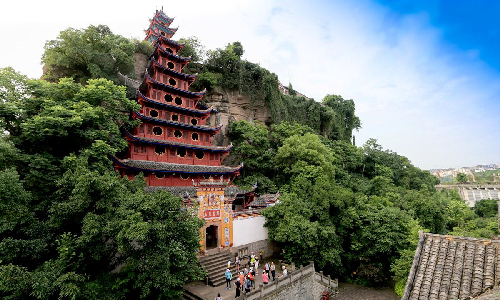
Today you will visit the famous Three Gorges- Qutang Gorge, Wu Gorge, and Xiling Gorge. Qutang Gorge is the shortest one, only about 8 kilometers. But it is indeed the most dangerous one. The narrowest place is only tens of meters wide. The peaks on both sides are very close. The pattern on the back of the 10-yuan note in the fifth edition of the Chinese currency represents Qutang Gorge scenery.
And then you will pass the Wu Gorge. Different from the steep and short Qutang Gorge, Wu Gorge is much gentler and longer. It has a total length of 46 kilometers. Wu Gorge is famous for the beautiful scenery. The most attractive one is the 12 peaks on both sides. One of the peaks is called Fairy Peak. From a distance, it looks like a fairy standing on the shore, welcoming the passing ships. So, prepare your camera and record this beautiful natural scenery.
The last gorge you will see is the Xiling Gorge. Xiling Gorge is 66 meters in length and is the longest among the Three Gorges. Therefore, it owns the most landscapes and various peaks. Xiling Gorge includes many small gorges, such as Yellow Cattle Gorge. In ancient times, the Yellow Cattle Gorge had rapid currents and many reefs. If it goes against upstream, it is even more difficult for ships. Therefore, ancient people once described it as follows: Even though you depart from Yellow Cattle Gorge in the morning, you are still at the Yellow Cattle Gorge in the evening. Of course, there is no such difficulty now. Yellow Cattle Gorge still brings us many spectacular sceneries.
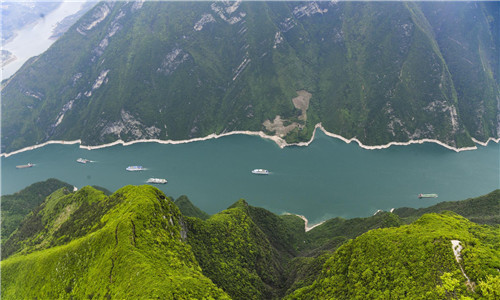
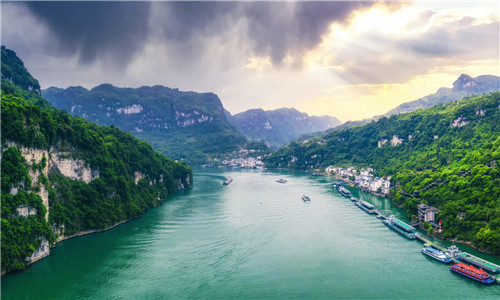
 Shanghai
Shanghai Today, you will disembark at Yichang Pier. And then we will take you to visit the Three Gorges Dam. It is a comprehensive scenic area that combines tourism, science, education, and entertainment. The Earthen Jar Scenic Area is a part of it. It is named after its top viewing platform resembles an inverted earthen jar, with an altitude of 262.48 meters. It is the best location for the panoramic view of the Three Gorges Dam Project. Climbing to the top viewing platform, you can not only overlook the entire Three Gorges Dam area but also enjoy the beautiful scenery of the Xiling Gorge that you just passed by.
After that, we will take an estimated train D954 14:06/20:27 to Shanghai. Your guide will pick you up from the train station and then you will be transferred to your hotel.
Shanghai is located in the east of China and the Yangtze River runs into the sea from here. It is an international metropolis and an important port city in China. About 1/3 of imported cars, diamonds, wines, dairy products, about 1/2 of imported cosmetics, medicines, medical equipment, more than 60% of imported clothing and accessories, more than 70% of imported watches, etc. are imported from Shanghai port and transported to the whole China.
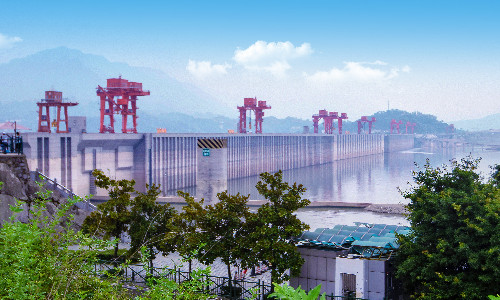
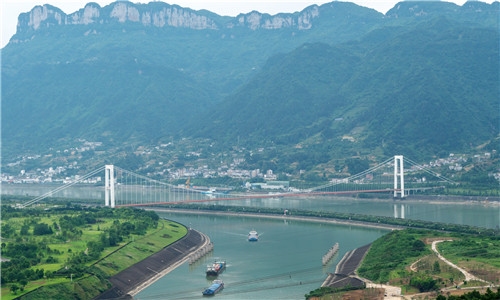
After breakfast, we will take you to visit the Yu Garden (It is closed each Monday). It fully embodies the architecture and design style of Chinese classical gardens. Yu Garden covers an area of more than 30 acres, with pavilions, rockery, ancient bridges, and ancient trees. Besides these, there are many cultural relics stored in Yu Garden such as the golden bowl. It is made of 89 grams gold and there is a dragon pattern carved on the bottom of the bowl.
After that, we will take you to visit the Jade Buddha Temple. It is one of the top 10 sightseeings in Shanghai. Although it is in the busy city center, you will find inner peace when you walk into the temple. The Jade Buddha enshrined in the temple was transported from Myanmar. It is very exquisitely carved and decorated with hundreds of jewels. Besides, the Jade Buddha Temple also holds various activities to help people have the opportunity to get in touch with Buddhism in the fast-paced life. During the two-day temple life, people will learn about Buddhist rites under the guidance of the master, including reciting scriptures, meditating, copying Buddhist scriptures, and so on. The host of the Jade Buddha Temple said that he hoped urbanites could slow down, calm down, feel the compassion and wisdom of the Buddha, and understand the philosophy and truth of life.
After lunch, you will visit the Oriental Pearl TV Tower which is 468 meters high. It used to be the tallest building in Shanghai. Inside the tower, there are revolving restaurant, Shanghai Historical Development Exhibition Hall, etc. The 259-meter-high suspended sightseeing corridor is 150 meters in length and 2.1 meters in width. It is a good place for tourists to enjoy the whole view of Shanghai.
After that, we will take you to visit the Bund. If you come to Shanghai, the Bund is the must-visit place. It is the intersection of ancient Shanghai and modern Shanghai.
And then you will go to Nanjing Road. No one can refuse the attraction of the most prosperous shopping street in China. You can get almost everything you want here no matter the international brand products or the Shanghai local goods. The meat moon cake here is a delicacy that cannot be missed. Different from traditional Chinese moon cakes, the fillings of this moon cake are meat instead of red bean paste, jujube paste, etc.
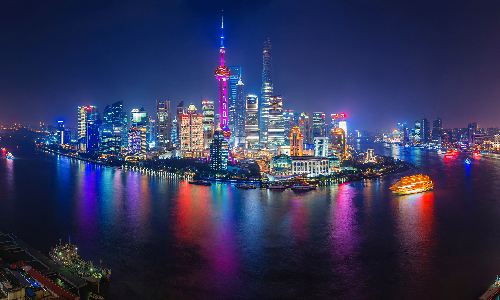
Today we will drive southwest for about 1 hour (49 KM) and take you to visit the water town, Zhujiajiao. It is a well-preserved water town in Shanghai. Here you can see traditional buildings such as stone bridges and gardens. And there are a variety of exquisite shops, where you can taste the local cuisine or buy some souvenirs. Stinky tofu is one of the most popular food in Zhujiajiao Water Town. The deep-fried stinky tofu is topped with some spicy sauce. Although it smells a little strange, it tastes very delicious.
After lunch, we will drive back to Shanghai city center and take you to visit the Xintiandi. This was originally an area of old houses in Shanghai. Later, more and more bars, restaurants, and exquisite shops opened here, giving these historic buildings new vitality. Walking in Xintiandi, you seem to travel back to Shanghai in the 1920s and 1930s.
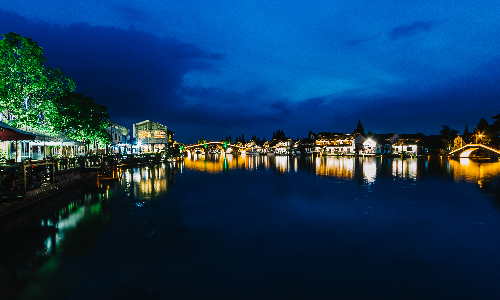
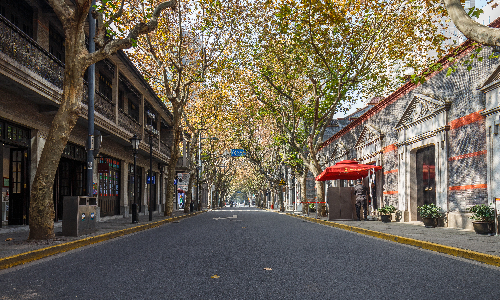
After breakfast, you will be transferred to the airport and then you will fly back to your sweet home.
Editor: Betsy He
Proofreader: Carrie Zhang
| City | Five Star hotel list | Four Star hotel list |
|---|---|---|
| Beijing | Sunworld Dynasty Hotel Beijing Wangfujing | Sunworld Hotel Wangfujing |
| Xi'an | Tianyu Gloria Grand Hotel Xi'an | Sunworld Dynasty Hotel |
| Guilin | Lijiang Waterfall Hotel | Guilin Bravo Hotel |
| Yangtze River Cruise | Victoria Anna | Victoria Anna |
| Shanghai | Ocean Hotel Shanghai | Courtyard by Marriott Shanghai Central |
 |
![]() About your child or infant, please contact us for a discounted price.
About your child or infant, please contact us for a discounted price.



We started with a few days in Beijing & ended in Shanghai, from where we visited the Forbidden City and Great Wall. In between we visited Terra Cotta Warriors Museum, Panda Base, Shanghai Disneyland.

We had a wonderful holiday in China which will remain long in the memory. China is a breathtakingly beautiful country full of splendid temples and palaces, mountains and rivers, peaceful rural scenes and bustling shopping streets.
 QUICK ENQUIRY
QUICK ENQUIRY